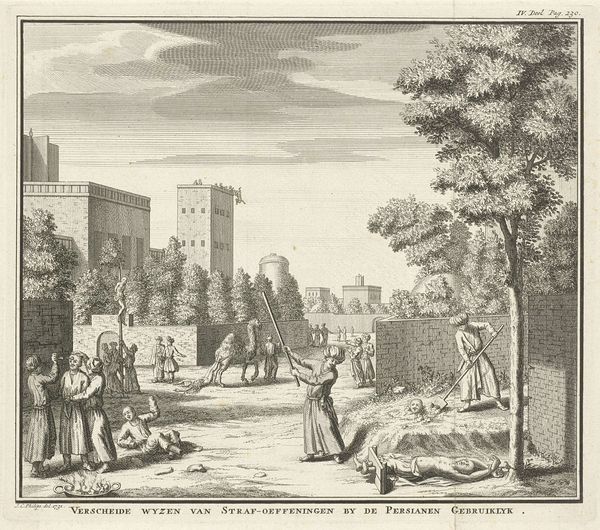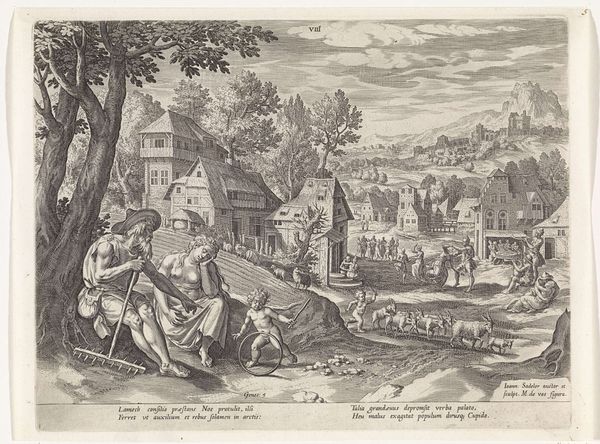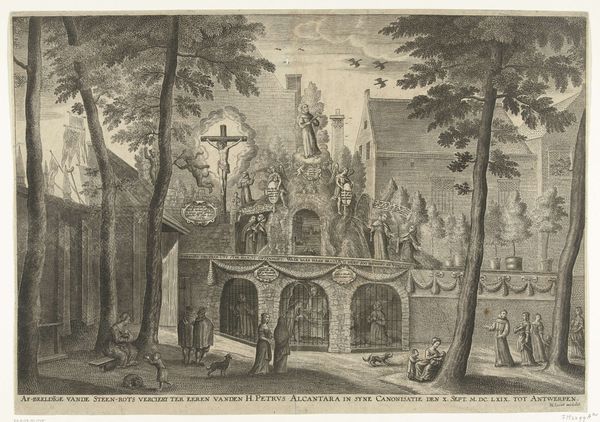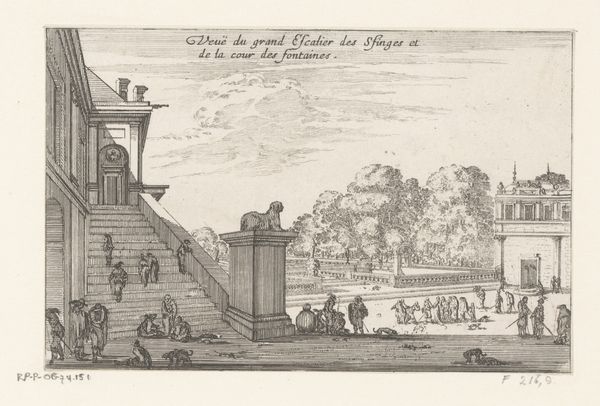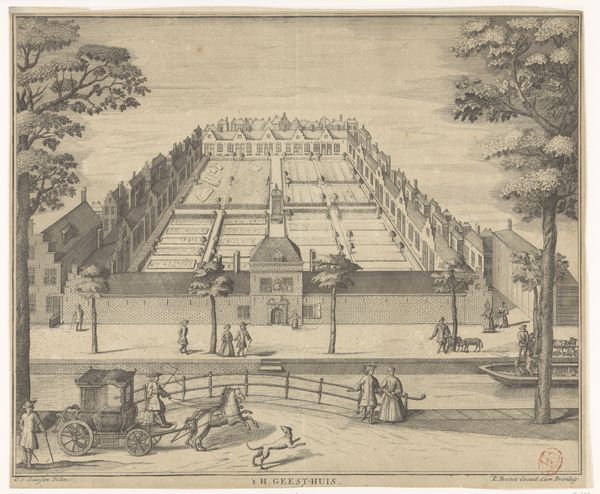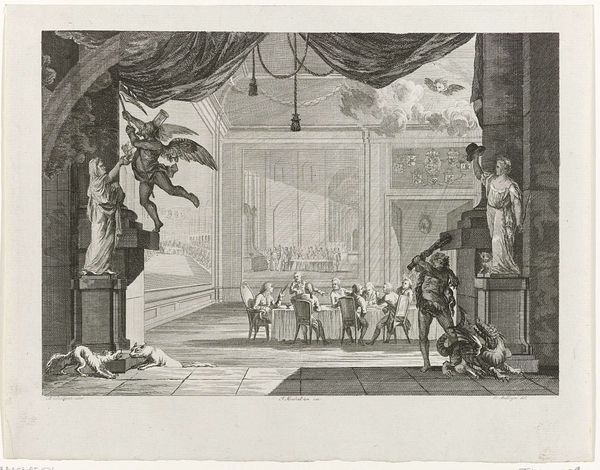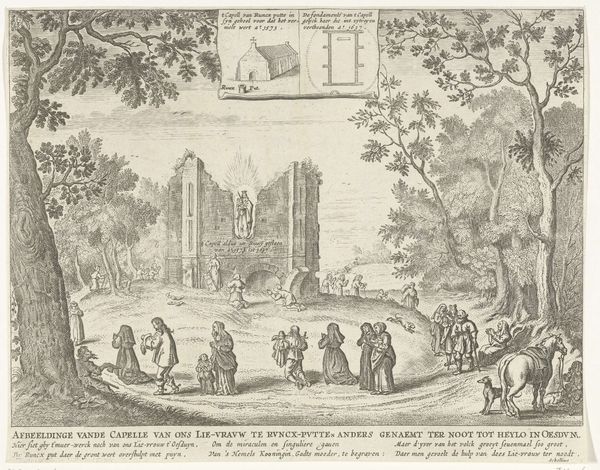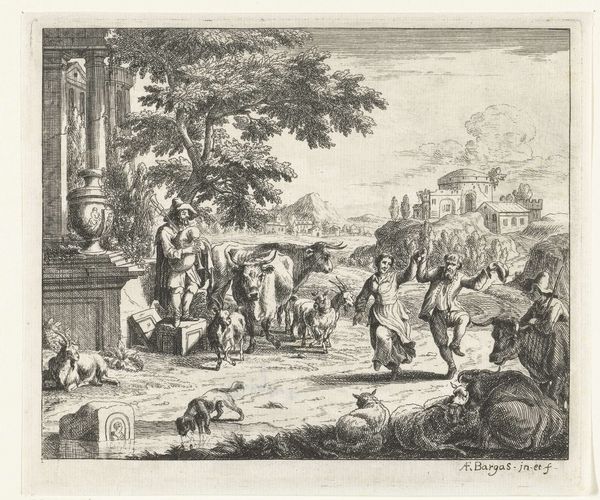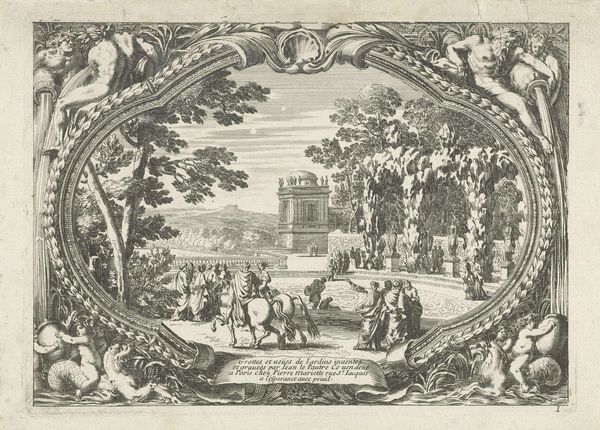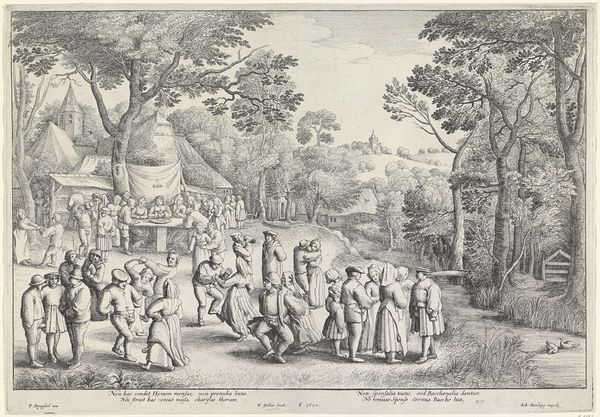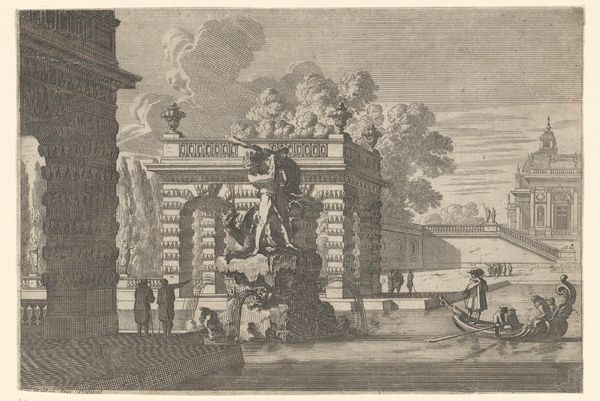
Figuren bij een klassiek grafmonument: Caesar voor de tombe van Alexander c. 1700 - 1706
0:00
0:00
print, engraving
#
baroque
# print
#
landscape
#
classical-realism
#
figuration
#
form
#
line
#
cityscape
#
history-painting
#
engraving
Dimensions: height 500 mm, width 643 mm
Copyright: Rijks Museum: Open Domain
Gerard van Houten made this print of Caesar before the tomb of Alexander, using the technique of etching. It is a fine example of how a drawn line can evoke an entire world. The etching process involves covering a metal plate with a waxy, protective ground, then scratching away areas to expose the metal. The plate is then immersed in acid, which bites into the exposed lines. Van Houten would have repeatedly stopped the process, in order to achieve the different tones that you can see here. Finally, ink is applied to the plate and then carefully wiped away, leaving ink only in the etched lines. With the application of great pressure, the image transfers to paper. Consider the implications of this method. It can yield many impressions, enabling the relatively easy distribution of imagery, which suited the increasingly commercial society of 18th-century Europe. The print medium allowed artists to cater to a broader audience and participate in the burgeoning art market. This challenges the traditional hierarchy between fine art and craft. The print is both a work of art and a commodity, reflecting the complex interplay between artistic expression and economic forces in Van Houten's time.
Comments
No comments
Be the first to comment and join the conversation on the ultimate creative platform.
